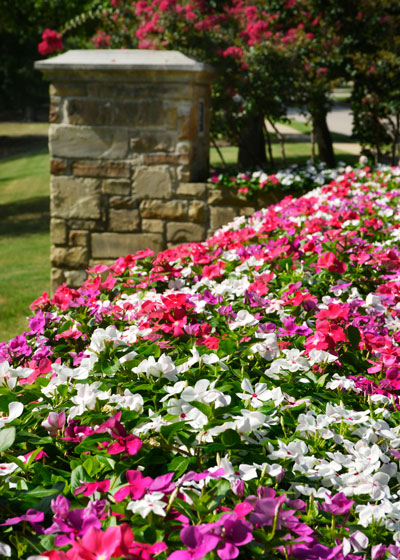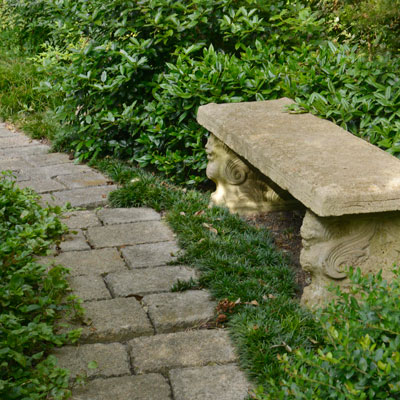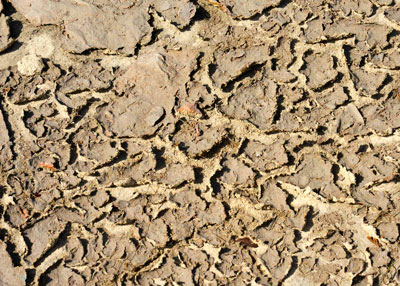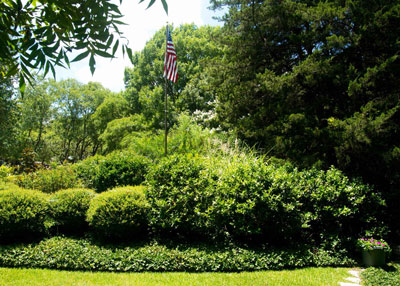Lessons Learned in Soil Science
Our soils are the foundation of all that we grow, whether it’s food, fiber or flowers. Let’s look at the critical things you should know about the soil your gardens call “home.”

Color. You can learn so much about your soil just by looking at its color.
Some of you live in a region of Texas known simply as the Blackland Prairie, so named for its black clay gumbo soils. For the most part, that Blackland slice of Texas runs along and both sides of I-35, from Dallas and Fort Worth all the way to San Antonio. Dark soils typically have fairly high levels of organic matter. Sometimes, it’s from decayed tree leaves, but in the I-35 corridor it’s from prairie grasses. Organic matter turns dark in the process of natural composting.
Red and orange soil colors are usually indicative of high levels of iron. Yellow soils are often poorly drained, even stagnant and foul-smelling. Nothing will succeed in those conditions until drainage patterns are changed.

White and light gray soils are typically low in organic matter and nutrients, in need of significant improvement prior to planting.
It’s probably easier just to bring in new soils to add to what’s already there.

Depth. Texas soils vary from just an inch or two to many feet in depth. If you’ve ever dug a hole to plant a tree or set a post, you know how deep the soil in your yard is. Otherwise, you can get a fair idea by looking at creeks and washes near your home.
You’ll need 12 to 14 inches for turfgrass to thrive, 24 to 30 inches for low to mid-sized shrubs and 30 to 48 inches for large shrubs and shade trees. If you have less than those depths, you’ll still be able to garden, but you’ll need to be much more careful in your selection of plants and how you feed and water them.
Your local veteran nurseryman will be able to advise you. He or she will also know good sources of reliable topsoil, should you need to add more. However, be careful not to change the grade of your landscape in a way that would drain runoff where you don’t want it.

Texture. This refers to the soil’s particle size. Clay particles are the smallest, visible only through an electron microscope. Sand particles are the coarsest, half a step down from small gravel. Silt is the intermediate particle size.
Want to see particle sizes in real life? Use a tall, narrow jar with a lid. Put a couple of inches of the topsoil in question into the jar, then fill it almost to the top with water. Shake it vigorously, until all the soil has gone into suspension. Set it on a windowsill for a week. Sand will settle to the bottom almost immediately, followed over a matter of days by silt and some clay. At the end of the week, some of the clay particles will still be floating in suspension, almost as a permanent stain to the water.
This variation in textures is represented graphically by the “textural triangle.” Sand, silt and clay are at the three points. Clay soils, with their almost infinite amount of surface areas, will take on much more water, and they will stay wet for prolonged periods. Sandy soils accept water much more quickly without runoff, but they’ll dry in just a day or two in the summer. Silt soils, for the record, tend to form plates that crack (i.e., edges of stream beds), and they must be amended vigorously before they’ll produce healthy plants. Silt dredged from lake bottoms is not a good source of topsoil.
So, back to the center of our textural triangle: the ideal soil is in the center of that triangle. We refer to such a blend of all three particle sizes as “sandy clay loam.”

Fertility. Learn to “read your plants.” Nitrogen results in dark green foliage and vigorous growth. Shortage of nitrogen results in stunted plants and a lighter green color than you might normally expect.
Iron deficiency is common in alkaline soils such as the I-35 corridor and westward from there over most of the western two-thirds of Texas. In alkaline conditions, the iron is insoluble and the plants are unable to bring it in through their roots. Symptoms of such iron chlorosis are yellowed leaves with dark green veins, most visible on the newest growth first.
Have your soil tested through a reputable lab every two or three years. Texas A&M’s lab is outstanding, and it’s available through the website. Don’t be surprised if the report comes back showing a need for only nitrogen – that phosphorus is already present in potentially harmful amounts. Several states have initiatives in place calling for no phosphorus at all in lawn and landscape fertilizers.
Acidity/Alkalinity (pH). In addition to the nutritional ratings, your soil test will give you this information as well. The ideal soil mix is slightly acidic (pH of 6 to 6.5), but some Texas soils, again along and west of I-35, are very alkaline (pH of 7.5 to 8). Public drinking (and irrigation) waters are even more alkaline in many areas.
Such highly alkaline conditions seriously impact the solubility of trace elements, most notably iron and zinc. However, it’s easier to choose plants that can tolerate the alkalinity than it is to make significant long-term changes in it. Again, your nurseryman can help you.
